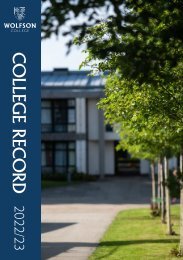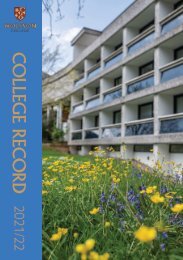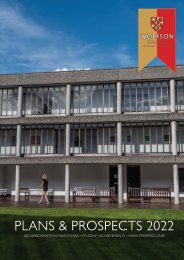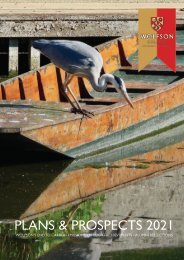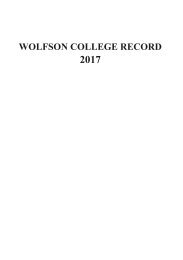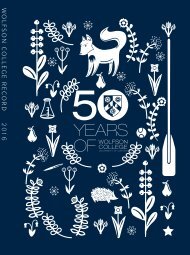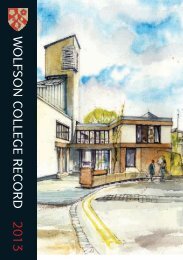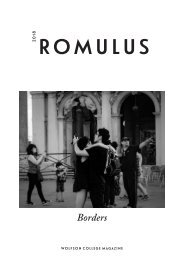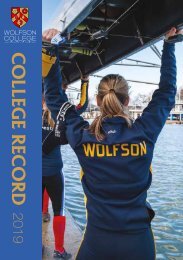You also want an ePaper? Increase the reach of your titles
YUMPU automatically turns print PDFs into web optimized ePapers that Google loves.
(Biblia Sacra Vulgatae Editionis, Paris 1662) recently donated to the <strong>College</strong> by Dr<br />
John Penney. It formerly belonged to the anthropologist Godfrey Lienhardt (GBF<br />
1967–88), a friend and colleague of Evans-Pritchard, who mainly studied the Dinka<br />
of southern Sudan.<br />
This Bible was the work of Antoine Vitré (?1590-1674), a French printer who<br />
adopted the device of Hercules standing triumphant next to a dead monster, with<br />
the caption Virtus non territa monstris (‘Courage not scared of monsters’). He was<br />
the first Paris printer to use Syriac type in his Syriac and Latin Psautier (1625), and<br />
he became the King’s official printer for oriental languages in 1630. He was best<br />
known for his Bible Polyglotte (1645), which required a large financial outlay – for<br />
which he was never reimbursed, as he had expected to be – to buy the necessary<br />
typefaces, since it was to be ‘imprimée en arabe, en chaldéen, en grec, en hébreu, en<br />
latin, en samaritain et en syriaque’. This enormous – ultimately ten-volume – work<br />
of scholarship, which involved extensive expert collaboration, started in 1628 and<br />
was completed in 1645. Apparently the paper and the layout were attractive, but the<br />
inconvenience of the format, as well as the number of errors the work contained,<br />
sadly reduced its value. Nevertheless, Vitré’s folio Bibles are thought by some to be<br />
amongst the best printed books of the seventeenth century.<br />
Wolfson’s copy is distinguished by the biblical text being complemented by 364 fullpage<br />
copper plate engravings, which have been bound up with it into one volume.<br />
These illustrations, which are interspersed throughout, originate from quite a<br />
different publication, the first volume of Scheuchzer’s great work, the Physica Sacra.<br />
This was published in the 1730s in various Latin, German and French editions,<br />
and was, as Professor Kennedy informed us, intended to be an explanation with<br />
commentary of the Bible on natural-scientific grounds. Scheuchzer himself oversaw<br />
the illustrations, which were largely based on items either in his own natural history<br />
cabinet or in other famous European cabinets of rare specimens. The plates were<br />
created in Augsburg by Johann Andreas Pfeffel (1674–1748), who employed many<br />
artists and engravers to produce a magnificent four-volume, lavishly illustrated<br />
folio work, in which it has been said that the Baroque attains, philosophically and<br />
artistically, its high point and conclusion.<br />
112



